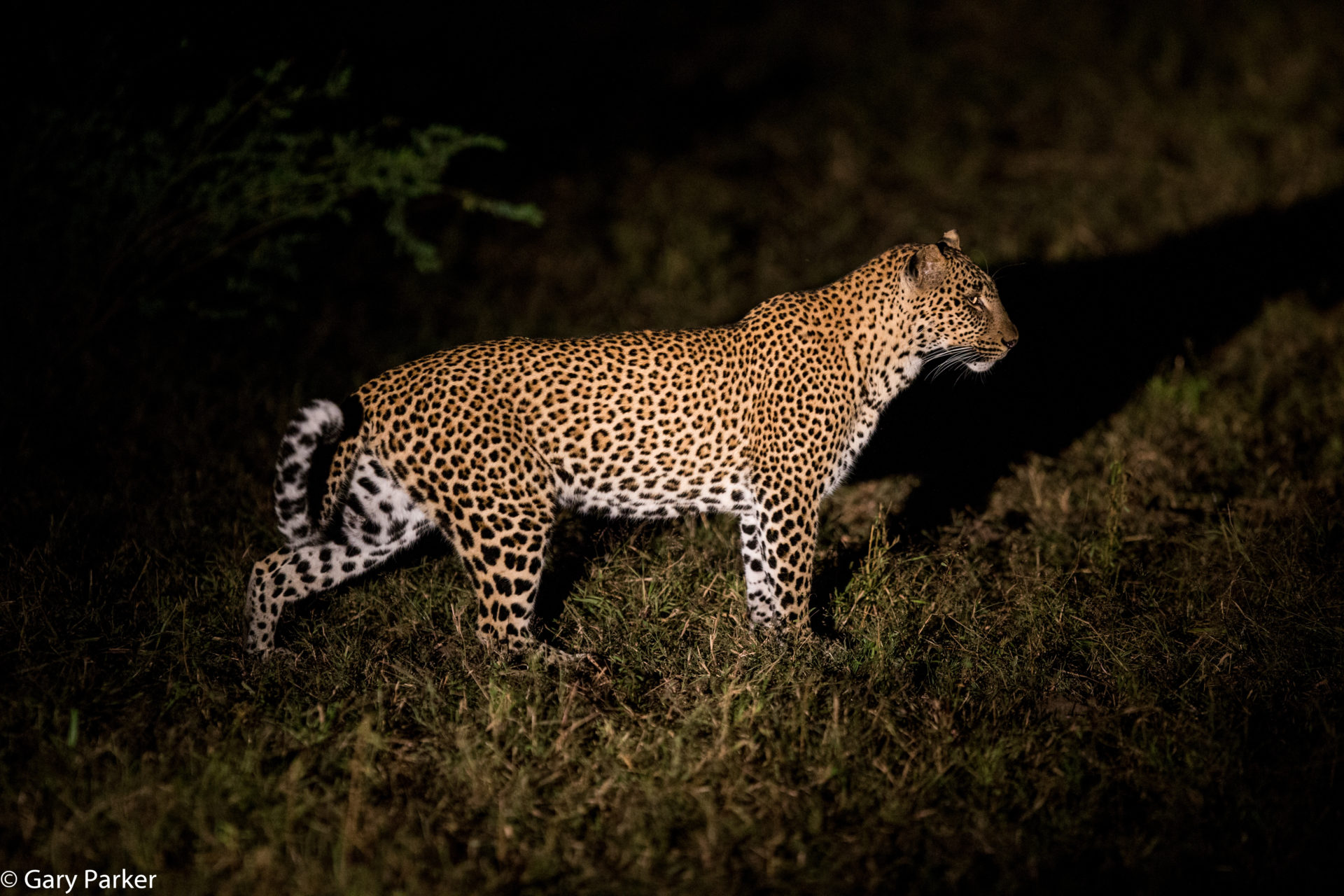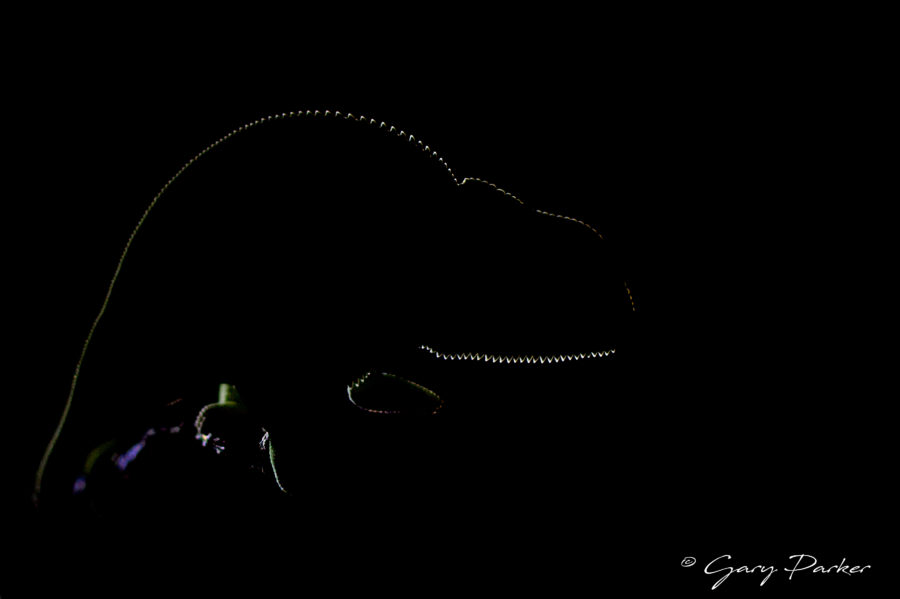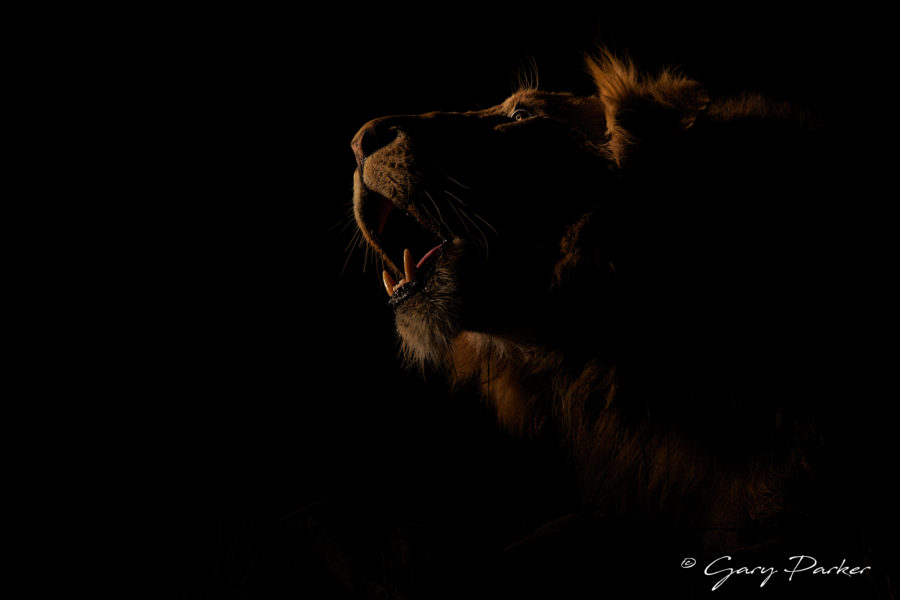
Any photographer – amateur or professional – has heard of the term, the “Golden Hour”. The Golden Hour is normally the first 30 minutes after sunset and the last 30 minutes before sunset, and gives off a reddish tinge and softer light. This is arguably the best light to photograph wildlife.
Photographing wildlife is often unpredictable and there might not be animals around during this magical light. As a photographer you need to be quick because as the sun rises in the sky the intensity of light changes; and you will need to adjust your shutter speed, ISO, and aperture settings accordingly.
Within the next few blog posts I will be explaining ways that I have used light available to me – either in sun light, flashlight or spotlight.

This will always be one of my favorite images. On this particular night I was looking for something unusual to capture. What I initially had in mind was to photograph a scorpion on a tree lit by some sort of black light.
But we came across this little guy – a chameleon sitting on a branch exposed to light from a handheld flashlight. Being a wildlife guide, I had seen and photographed many chameleons, but I wanted to find a way to capture this one differently.
At the end of the night we were lucky enough to snap a few shots and I achieved the above image without a tripod, and using a steady hand.

This lion photograph is another one of my favorites. We found this male just before sunset – doing what lions do best, lazing around!
From my time spent in the bush I knew that lions would normally start stirring around sunset, so we stuck around. One of my guests at the time had a keen interest in photography so we spoke about camera settings in attempt to capture the perfect shot.
While discussing camera settings, my tracker Ronald, knew the type of image I wanted to capture and communicated with other trackers about what we were anticipating.
The lion lifted up his head and began grooming himself. I had forewarned my guests that there would only be a few opportunities to capture the perfect image, as lions would normally yawn a few times, stretch their legs, and then stand up.
As expected, the male lion gave us a few yawns and we shot away.
Written by Gary Parker, Private Guide, Photographer and Marketer at IKON
F.A.Q. on Photographic Safaris
1. Why have a photographic guide?
Your photographic guide will not only advise you on photographic opportunities but is also a qualified safari guide that understands animal behavior. Your guide has personally traveled to all IKON’s promoted destinations and knows other local guides and staff.
2. Who is the guide?
Gary Parker, a wildlife expert with over 30 000 safari hours and is not only passionate about Africa but is an enthusiastic wildlife photographer.
3. What is a photographic Safari?
A photographic safari is a safari aimed towards those who are interested in photography and wildlife. On our IKON Photographic Safari you will have unlimited time at sightings in order to capture the perfect shot and can be tailor-made to suit your needs.
4. What can a photographic guide offer?
Your guide will offer photographic suggestions on certain scenarios, be on hand throughout your journey and organize activities between safaris.
5. Can camera equipment be hired?
Yes, equipment can be hired. This can be organized through IKON (at extra charge) and can be collected in South Africa.
6. How is a vehicle equipped for photographic safari?
A safari vehicle is equipped with 10 seats. There will never be more than 6 photographers on any trip and means that each person will have a window seat with space for equipment.